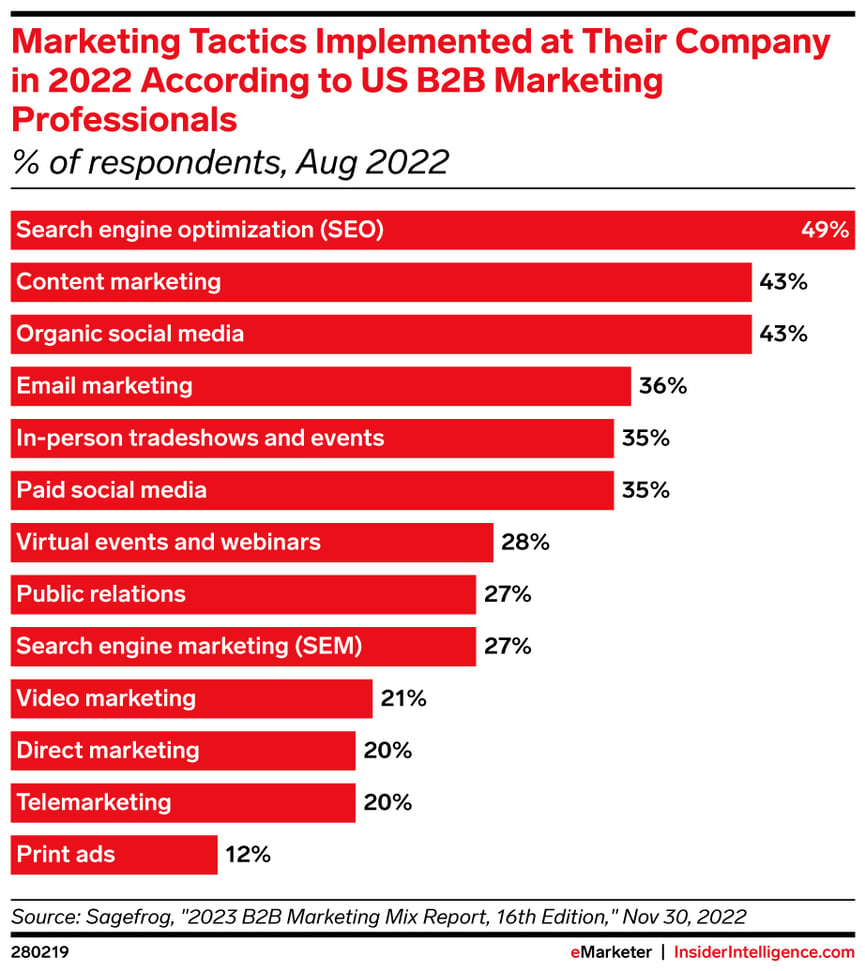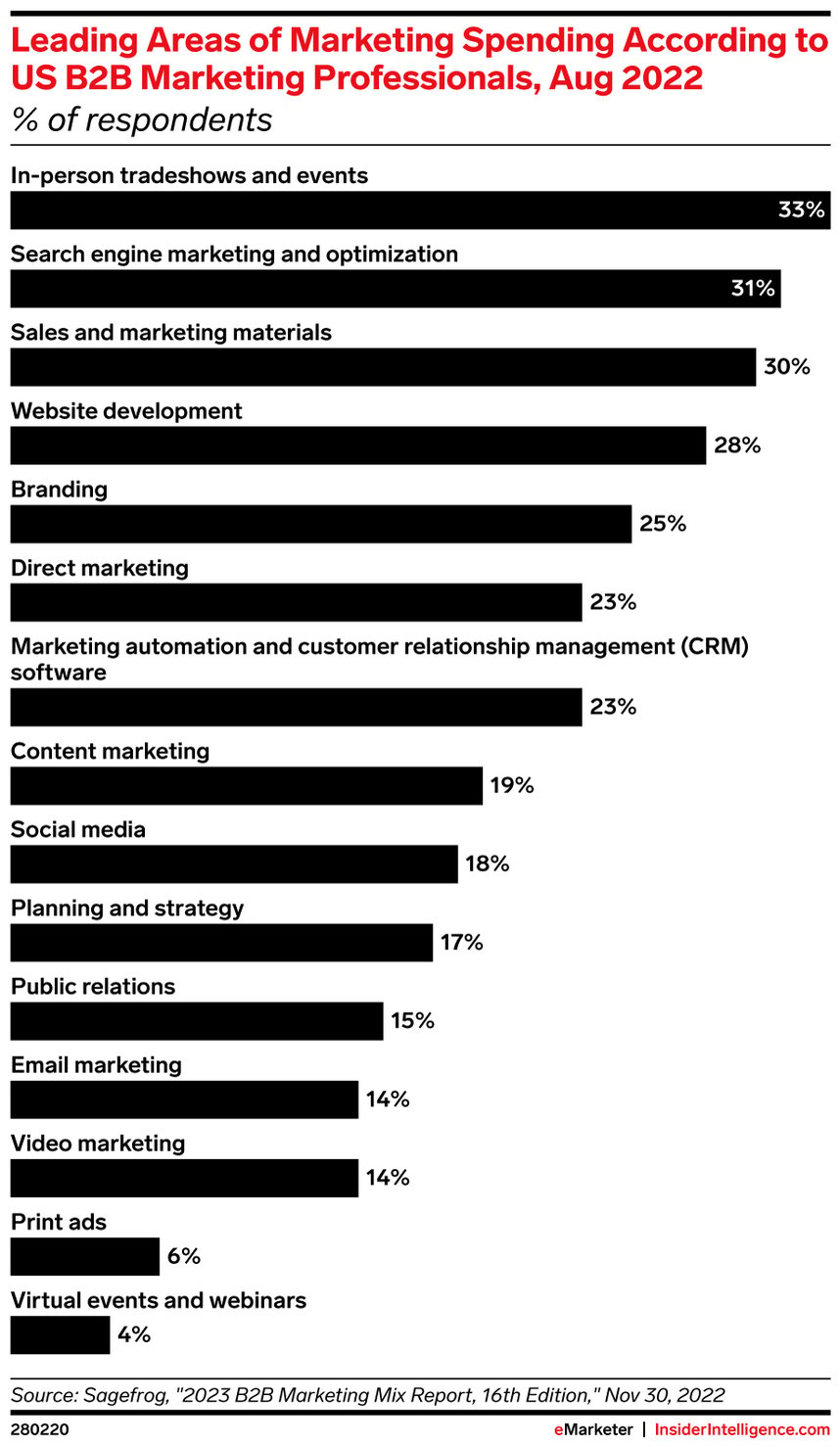How to develop a trade show strategy as part of your holistic communications plan

According to eMarketer, in-person trade shows and events were in the top five marketing tactics in 2022, with trade shows being No. 1 in marketing spending, above all types of advertising spending. With the investment required in time and resources, it’s not a tactic to be taken lightly. You need to be able to relay to your team(s) how many trade shows (if any) your company should participate in during the marketing year, as well as how you’re going to measure effectiveness and success after the fact.
To ensure maximum value, we recommend you build your trade show strategy into your overall communications planning process. While what your company/brand needs to accomplish each year may vary, there are some common trade show objectives to keep in mind:
Building personal connections with current and potential customers
- Developing brand and product recognition across your product line
- Seeing and learning first-hand what is happening in your industry
MARRY COST TO VALUE
The first step is to decide what you need to communicate and then establish a trade show strategy as one of the components that can help you do that. If planned correctly, and with adequate lead time, a trade show strategy can serve as a potential mechanism for other successful tactics and events throughout the year.
Consider shows that align with your milestones and where your customers and prospective customers will be. Talk to your team, including sales, to discover which shows best align with your business goals. Perhaps you decide to go geo-specific instead of heavying up on national shows one year and reverse that the following year. Again, the bulk of those decisions should be made during the planning process to align with sales goals.
EMarketer says that in coming years “changing economic conditions, crowded markets and the consumer-driven buyer will only underscore the necessity” of the customer experience and that those programs will “center on brand, company values and talent. A purposeful brand, meaningful company values and attention to talent and current employees all foster a deeper connection with customers and encourage them to stay loyal.”


IT'S ALL ABOUT THE CUSTOMER EXPERIENCE
Your goal should be to develop a booth experience that will increase foot traffic and gather valuable customer data. A company like Rhea + Kaiser can help you incorporate best practices from planning to execution. Just as there are all levels of investment in the booth display and aesthetic, the same goes for the booth experience. Some booths may bring in live music, host prominent industry speakers, have VR games that tie to a product launch or run a contest.
When determining the experience you’ll invest in, keep your target audience in mind. You want to make sure to deliver an experience that aligns with your brand and is one your target audience will enjoy. While booth construction and experiences come in all shapes and sizes, ultimately people are at the show to see and learn. Take the opportunity to talk to the people who visit your booth. Provide them with valuable information they couldn’t glean elsewhere. Take advantage of the in-person interaction and collect information about your visitors for follow-up and research purposes. Tie the best giveaways to delivering a certain amount of data.
At the beginning of this post, we said your trade show strategy should be part of your overall communications plan and used as a potential mechanism throughout the marketing year. That’s because it’s not enough to just be at the show. All that advanced planning is not just related to what happens inside the booth. Strategic trade show planning considers advanced and post-show promotion too.
So how does this look in action? Let customers know where you will be and when through tailored communications. Time your launch, materials, giveaways, press release, email marketing, paid and organic social media, and content based on the lead time needed to impact the audience you want to reach. If you can, set up media interviews with your product leads to take place in the booth during show hours. Plan to follow up with anyone you talk with at the show, whether that’s a quick thank you email or a post-show offer.
Not sure what your post-trade show plan should include? We’ve got you covered. Download our trade show follow-up strategy playbook.
At R+K, we love to develop trade show strategies and plans that deliver results. Let us help you be successful in your next endeavor. Drop us a note to learn how we can help.
